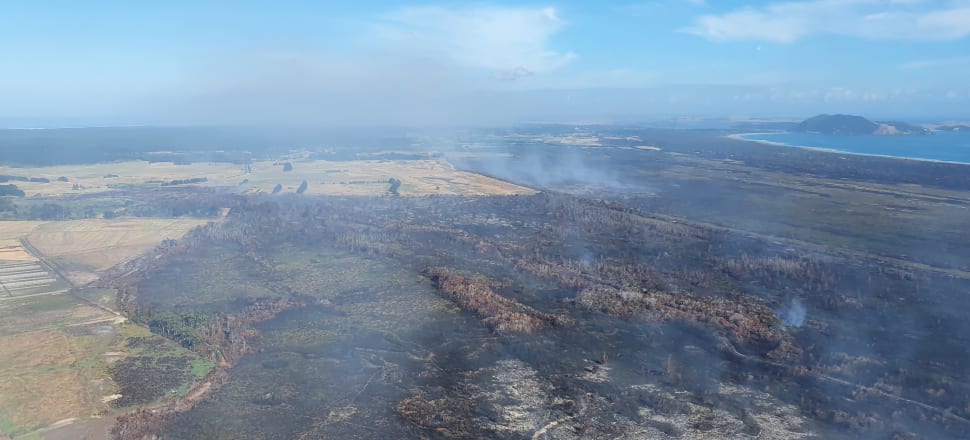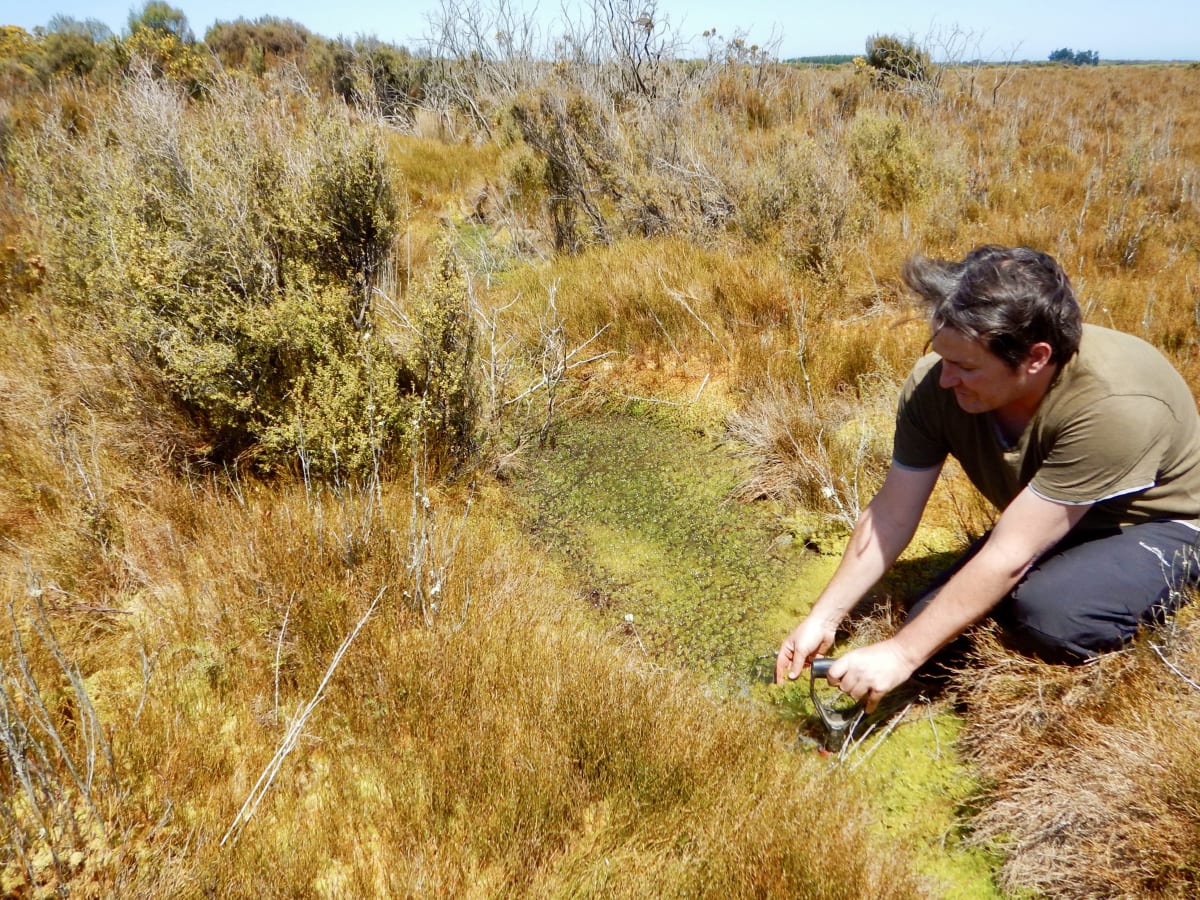
When the country’s scarce wetlands go up in smoke, an unknown - but enormous - quantity of CO2 ends up in the atmosphere
Nine months on from the fire that burnt through more than 1300ha of Southland wetland, and more than a year after a hard-to-quell Northland blaze began, scientists are trying to work out how to put a figure on carbon emissions from burning peatlands.
At the time of the fires in the Awarua wetland near Bluff and at Kaimaumau on the west side of Rangaunu Harbour, conservation group Forest & Bird sounded the emissions alarm given peatland’s enormous carbon-storage capacity.
A United Nations assessment released last November says peatlands, although covering only about 4 percent of the planet’s land surface, contain up to a third of all soil carbon, double the carbon content of the earth’s forests.
As the Awarua wetland burnt, Sir Alan Mark, an emeritus professor of botany at the University of Otago, and Forest & Bird life member, described it as one of the country’s few remaining large peatlands, the carbon density of which was helping to offset climate change.
“Wetland ecosystems offer unparalleled carbon storage, and the depth of peat in Awarua-Waituna is particularly substantial,” Mark said.
“Fire is the worst thing that can happen to any wetland. They are hard to put out and the combustion converts the stored carbon to carbon dioxide, a major greenhouse gas.”
New research
Keeping the carbon locked away is critical to achieving global climate goals, says the UN assessment.
And knowing the extent to which it is released by fire is a new goal of the Department of Conservation’s Arawai Kākāriki wetlands restoration programme.
Hugh Robertson, DoC’s freshwater principle science adviser and a contributor to the UN assessment, says although wetland fires can occur naturally, particularly in the north, human-induced blazes can result in additional carbon emissions.
“We are looking to estimate the carbon lost from the peatland fires last summer as part of research under the Arawai Kākāriki programme.
“This research will increase our understanding of the amount of carbon that can be lost in a short time by events such as fires.
“It will also guide efforts to rewet and restore wetlands for both biodiversity conservation and to reduce carbon loss.”

The research methods will take into account the total area of burnt peatlands, the depth of peat soil affected by fire and the carbon content of peat soils.
Rich store
Robertson says work to date suggests peatlands store about 1300 tonnes of carbon per hectare, in comparison with natural forests’ 230 tonnes. However, peatlands are vulnerable to loss of stored carbon when degraded due to drainage or fire.
Drainage alone is thought to release the equivalent of about 20 tonnes of carbon dioxide into the atmosphere per hectare a year.
The UN report says Oceania peatlands are among the most threatened and least understood in the world, under threat from drainage and agricultural conversion, climate change and fire.
According to Forest & Bird’s freshwater advocate, Tom Kay, only about 10 percent of Aotearoa’s historic wetlands remain, most having been drained for agriculture or residential development.
“Those wetlands that remain are incredibly rare and incredibly important,” Kay says.
Robertson says there have been positive recent steps to conserve what’s left.
“Over the past five years, new policies and legislation have been established in New Zealand to improve the protection and management of wetlands, led by the Ministry for the Environment.
“Councils, primary industry and development sectors are all implementing the new policies and rules, which indicates a good awareness of wetlands.”
But what’s lacking, says Kay, is inclusion of wetlands in New Zealand’s emissions trading scheme.
“This new research will hopefully help us understand not only the quantity of carbon lost through wetland fires, but also the carbon stored within them before those fires,” he says.
“Knowing the significance of carbon storage in peatlands will add to the already significant weight of evidence that these places must be protected and restored if we’re to have any hope of dealing with the climate and biodiversity crises.
“It might even help us pull wetlands into the ETS.”
Recovery occurring
Some recovery has been seen after the recent fires, says Robertson, with indigenous vegetation naturally bouncing back in some places.
In lower lying areas where peat fires can’t burn as deeply, native wetland vegetation is able to regenerate from the root systems and seeds in the soils.
Drier wetland habitats are subject to invasion by introduced plants where the fire burned more deeply or the land sits higher in the landscape.
“Wetland ecosystems have a range of values and characteristics and these different aspects of a wetland’s ‘ecological integrity’ will recover at different rates following fire.
“At Kaimaumau, it was previously observed that native wetland vegetation was generally able to recover within 10 years.
“However, it was also noted that future fires may lead to an increased abundance of introduced plant species, such as Australian weed species that are adapted to fire.”
Fire’s other effect is loss of habitat for threatened species such as Australasian bittern/matuku.
“If nesting is occurring during a fire, juvenile or unhatched birds may be lost,” Robertson says.
Wetter the better
Fire risk is related to environmental conditions, with wetter peat soils and a higher water table reducing the danger.
“Keeping peatlands naturally wet is critical for maintaining healthy wetlands and minimising the risk of fires,” Robertson says.
“This includes restoring water levels by avoiding drainage of peatlands. Even drains outside of peatlands can cause water levels to decrease.
“And secondly, be fire smart. Keeping fires well away from peatlands is very important, particularly during dry periods over summer.”
On that score, Kay says, a rainy holiday season is a boon.
“In some ways our wetlands have been lucky with the rain this summer - the risk of fire is hopefully lower in many places.”
That may be true of the north, but Southland is experiencing its second dry summer in a row.
Kay says weather extremes are happening more often and more fires and floods can be expected in future.
“So we need to help the environment - and our communities - be more resilient to these events. Protecting and restoring wetlands is a massive part of that.”
Made with the support of the Public Interest Journalism Fund







